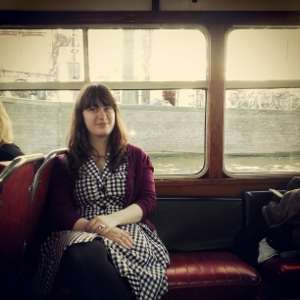Tonight’s concert at the Concertgebouw started with the Romance from Shostakovich’s film score The Gadfly, as a tribute to the conductor Yakov Kreizberg, who sadly passed away last March. A popular piece with violinists, the Romance is a beautifully melodic work, perhaps one of Shostakovich’s most popular ones. The solo violin melody was played by concertmaster Olga Martinova, who, like the entire orchestra, played very well.
Shostakovich’s Cello Concerto No.2, written as a birthday present to himself, for his 60th birthday, is one of his bleakest works. It is a three-movement piece, with a dancing, scathing scherzo at its heart. The first movement paints a picture of a desolate landscape, and even the strings and harp do not lighten the mood, the long, drawn-out notes on the cello only become stronger, almost like a lament. Slowly the movement becomes more energetic and virtuosic, but all the joy is cut short with the impact of a bass drum, loudly reminding the music to calm down. It then enters into a musical argument with the cello, a grotesque dialogue that leads into the coda and the calm, muted ending to the first movement.
The scherzo is, like many Shostakovich pieces, based on a folk song; “Bubliki, kupite bubliki” from Odessa. The mood of this movement is significantly different from the first, the scherzo is energetic and even wild at times, providing us with a scathing, gleeful dance. But this mood does not last very long. Towards the end of the movement the wildness does not sound so happy anymore, it becomes more defiant until finally the movement ends in a menacing fanfare for horns and percussion.
The cadenza of the third movement is somewhat retrospective, the cello provides us with an overview of many themes from the other movements, but also adds a sighing, falling glissando that might be the most important theme of this final movement. It changes the mood to one of sad nostalgia, as if Shostakovich wants to remind us of something, our own mortality perhaps? When the “Bubliki” theme makes its reappearance as an extreme, frenzied dance, its initial joyful nature has certainly disappeared, and it leaves the listener overwhelmed. When the music calms down, and the cello takes over again, the long, drawn-out nature of the solo part becomes almost painfully beautiful. The final, long-sustained D on the cello that slowly turns into silence is an apt and exquisite ending of the concerto.
Daniel Müller-Schott was in fine form. The difficulty of this cello concerto does not necessarily consist in complex, virtuosic demands made of the cellist, but rather in playing the longer notes not only well but adding an emotional charge to them. Müller-Schott’s body language and facial expressions exhibited these emotions, and his playing absolutely exemplified the impassioned nature of the work.
Stravinsky’s Petrushka is something else altogether. The second of his ballets written for the Paris-based Ballet Russes, it is a rhythmically complex and exciting piece, full of fun, humour, dissonance and explosions of sounds. The ballet is about a puppet, Petrushka, who comes to life and discovers he is able to love and have many other emotions. The version performed tonight is the one revised version from 1947, as opposed to the original composed in 1911, which has a smaller orchestration but is musically almost the same.
When played well, as the Nederlands Philharmonisch Orkest certainly did, listening to Petrushka can give one the feeling that one is really watching or listening to a puppet show. The ever-changing rhythms and many different melodies may appear confusing, but the recurring themes (such as Petrushka’s theme of C and F sharp) and beautiful tonal structure give the piece a certain balance. For me the highlight of the work and of this evening’s performance are the mocking trumpets, that in the end of the piece signify the ghost of Petrushka “still insulting the public”, as Stravinsky himself has said. A great ending to an evening of fantastic music.


